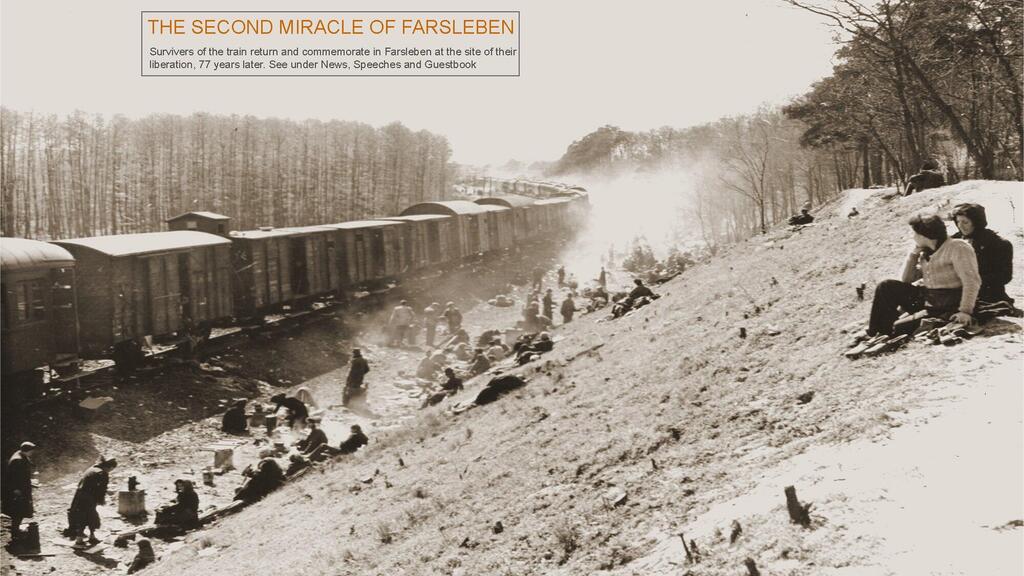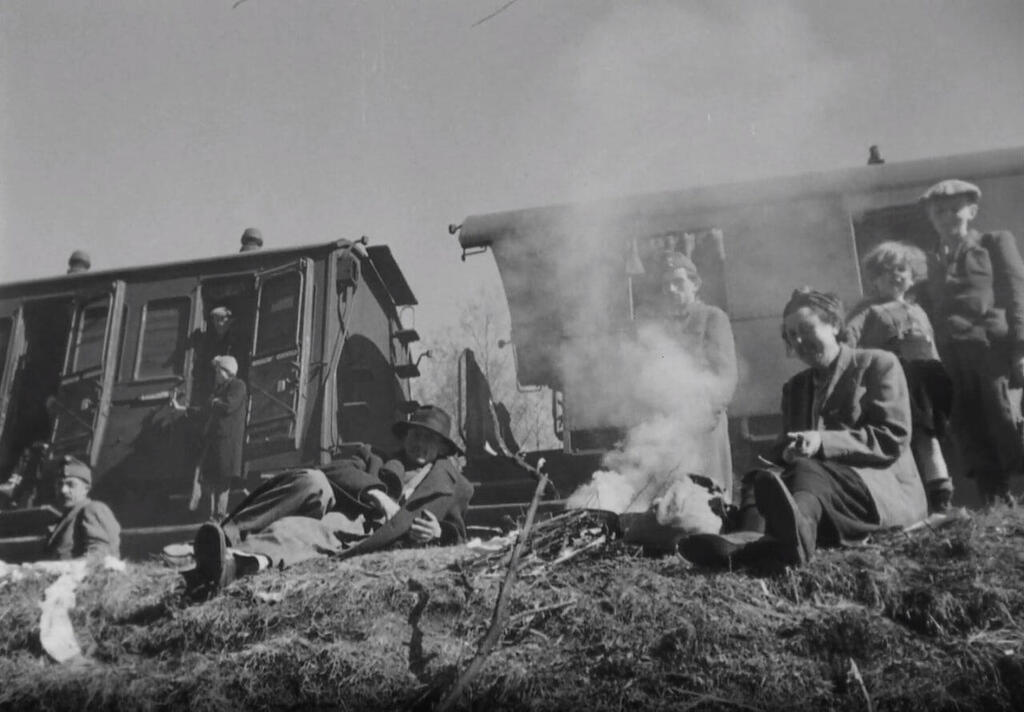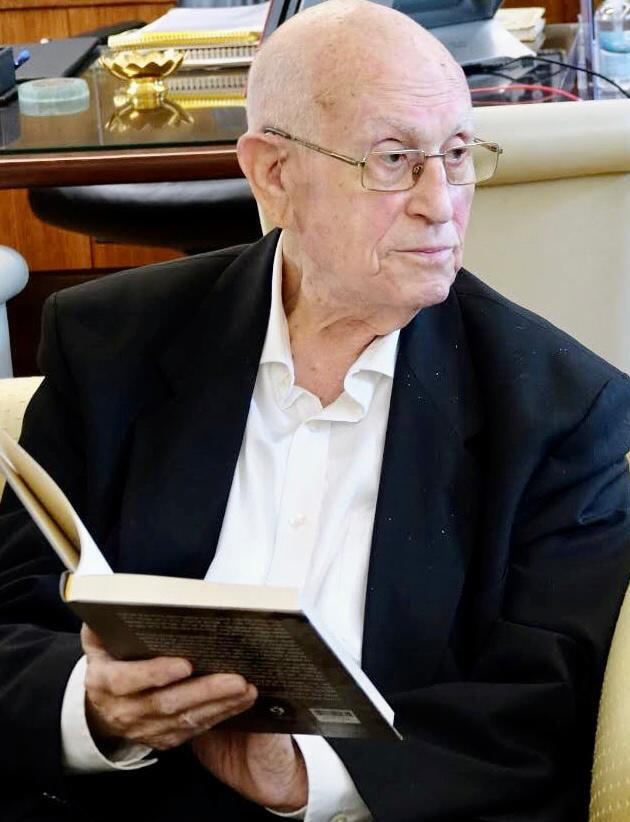Rare footage of liberation of Train of Death
(Video: U.S. National Archives)
Seventy-eight years after the 30th Division of the U.S. Army saved 2,500 Jews from the so-called Nazi death train which was transporting them from Bergen-Belsen concentration camp to Theresienstadt, moving never-before-seen footage taken by U.S. Army soldiers on the day of the train's liberation on April 13, 1945, was discovered.
More stories:
The Germans on the train were ordered to blow up the train over the Elbe River if they could not deliver it to Theresienstadt concentration camp, killing all 2,500 Jewish passengers from Bergen-Belsen. After six days of travel starting on April 7, 1945, the train was halted on April 13, 1945, near the town of Farsleben, Germany, close to Magdeburg and was unable to move due to the bombing by the Allies in the area.
8 View gallery
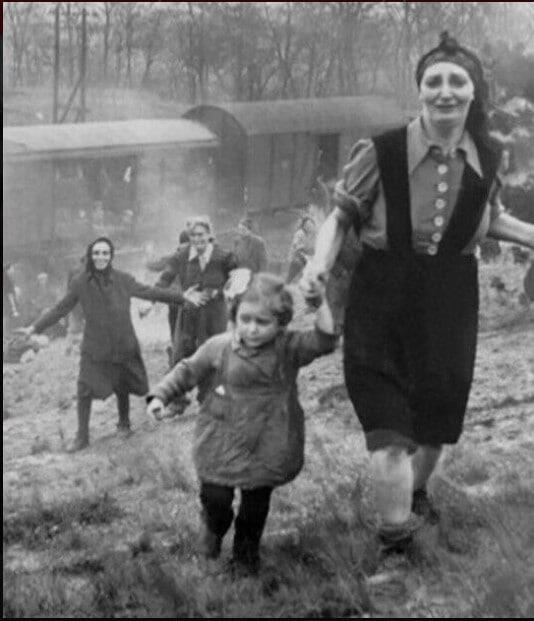

The moment of the train's liberation, April 13, 1945
(Photo: Major Clarence Benjamin, courtesy of the George Gross family, San Diego)
Around 4 pm, an American reconnaissance jeep accompanied by a U.S. Army tank arrived from the hill. They were American soldiers from the 30th Division of the U.S. Army. The American soldiers found the train guarded by Nazi sentinels. The train's engine was running and ready to move. Suddenly, the Nazi soldiers noticed the American tanks and fled, leaving behind 2,500 Jews, a third of whom were children who thought they were being taken to their deaths.
As the Nazis fled, several of the civilians, mostly women, girls and children, rose and rushed toward the American soldiers with cries of joy. Only then did the soldiers notice the passengers' horrific state.
REMARKABLE FOOTAGE REVEALS WWII TRAIN RESCUE HEROES
(ILTV)
George Gross, the commander of the American tank, recounted the encounter. "Everyone looked like a skeleton, so starved, their faces sick. And there was something else. When they saw us, they began to laugh with joy, if you can call it laughter. It was more like an outburst of pure, almost hysterical relief."
The survivors said that when they saw the Americans, they hugged them and cried happily. One of the American soldiers, Abraham Cohen, shouted to the bewildered prisoners, "Ich bin euech a Yidd" (Yiddish: "I am also a Jew") and showed them the Star of David hanging around his neck.
8 View gallery
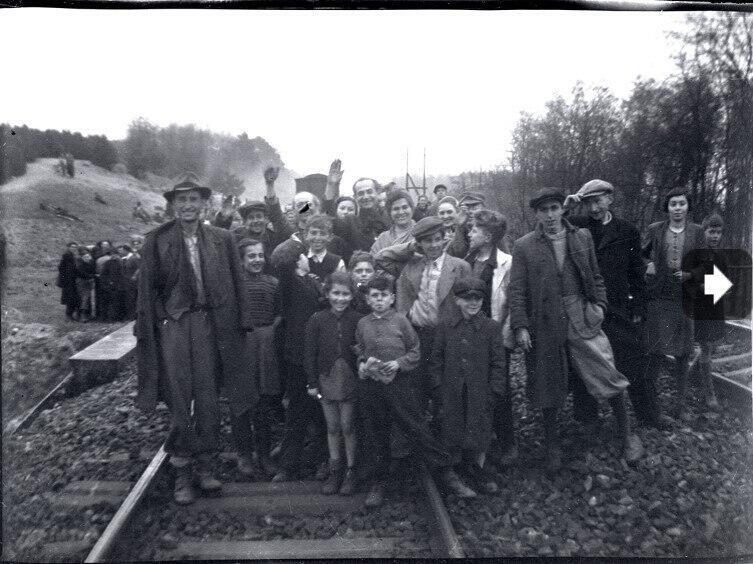

Jews liberated from the Nazi death train near Farsleben, in 1945
(Photo: Major Clarence Benjamin)
The liberation of the train was documented in many still photos, but never in video. The clip was found in the U.S. National Archives during work on a documentary about the train rescue mission initiated by Matthew Rozell, a New York-based history teacher who has been researching the event and interviewing American veterans who were among the train rescuers since 2001. He enlisted director Mike Edwards to create the film, and during the work, the poignant footage was discovered.
"A few days ago, I received a message from Matthew that another miracle connected to the train had occurred. He informed me that they had found a clip in the U.S. National Archives, filmed by American soldiers. I was in tears when I saw this clip," said Varda Weisskopf, whose father was a 15-year-old boy on the train and passed away in 2017.
Holocaust survivor Jacob Barzilai, 90, who was among the passengers of the train at just 12 years of age, recognized himself, his mother and his sister in the footage.
"We arrived at Bergen-Belsen as five people and only three of us returned. I lost my father and my grandfather there,” he says. “In the clip, I saw my mother, my sister and myself. It was the day of the train liberation on April 13, 1945. I was very emotional to see the footage. I was at a loss for words.
Our train was perhaps the most documented in the Holocaust. Its intended destination was to drown us in the Elbe, and the Americans prevented that. For years, I have seen countless photos of this train. But this is the first time I am seeing video footage."
Jacob's son, Eran Barzilai, recounted, "On Friday, the clip arrived in the WhatsApp group, which includes a few people connected to the liberation of the train from Bergen-Belsen.
8 View gallery
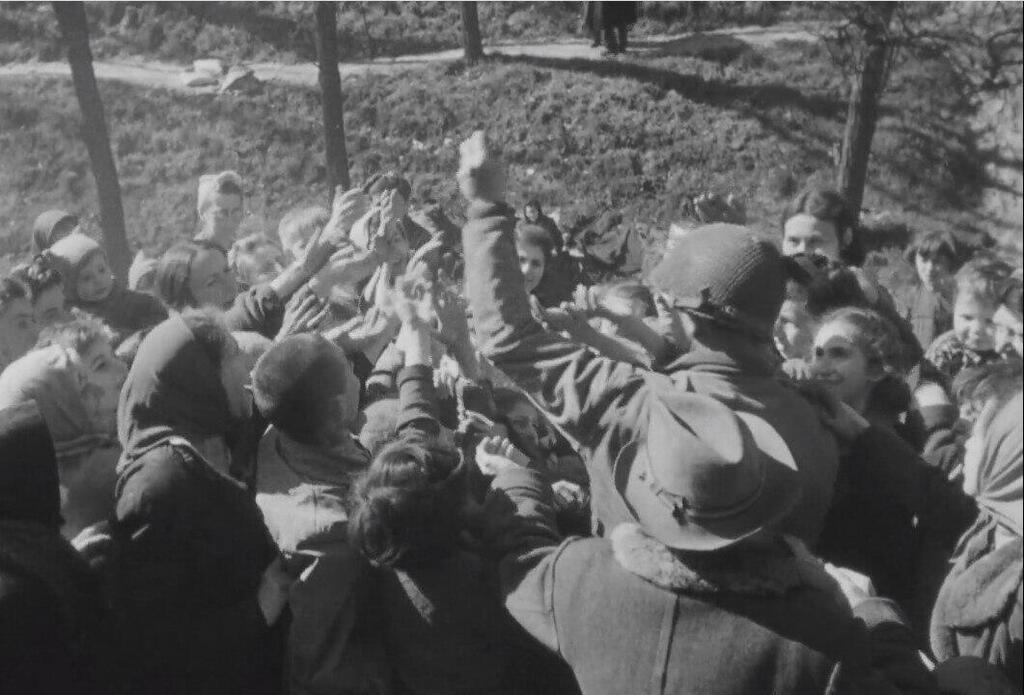

An American soldier hands out chocolate to survivors
(Photo: Major Clarence Benjamin)
When I watched the clip, I immediately recognized my father. He has only one photo from his childhood, at age 9, and suddenly I identify him in the clip, clearly recognizing my grandmother and my aunt who was a 5-year-old girl then. When I showed the clip to my father, he was very moved. He has been talking about these moments all these years, and suddenly there is video documentation that we had never seen before."
Miriam Mueller, 82, was 4 years old on the day the train was liberated. She did not recognize herself in the video but was very moved to watch it. "It brought up all sorts of memories. I had a hard time breathing afterward. I said this cursed war is just endless. We keep returning to it. Today, I have 26 grandchildren and 40 great-grandchildren, and there is another one on the way. The Lord, blessed be He, has performed a miracle with me."
8 View gallery
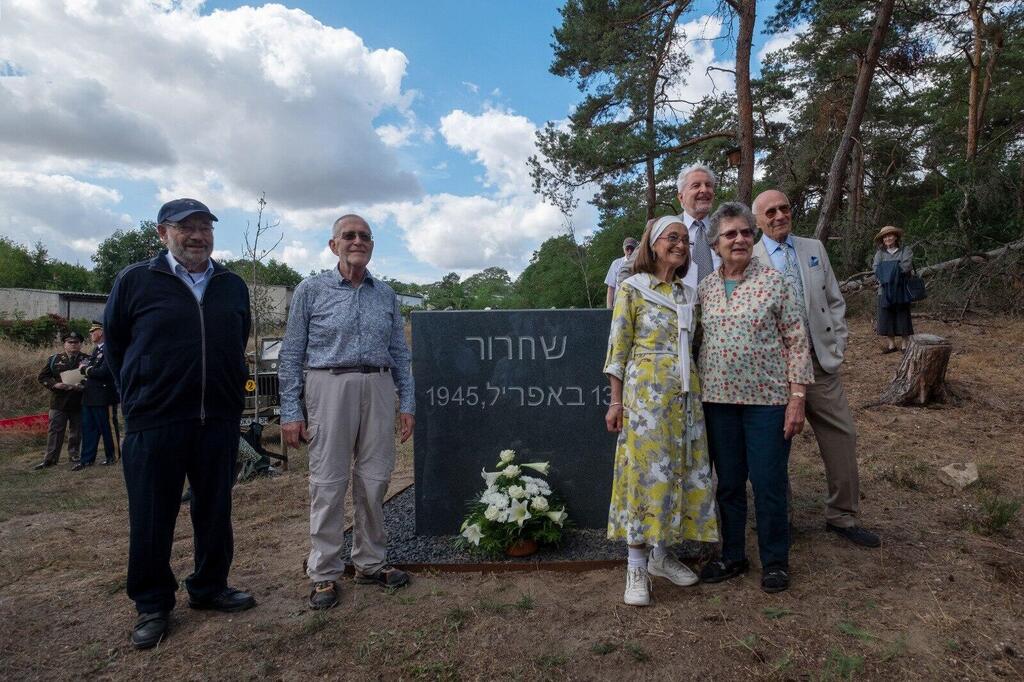

Transport survivors stand next to a monument dedicated to the liberation of the Nazi death train, in Farsleben, Germany
Bina Schwartz was 5 and a half years old on the day the train was liberated. "I was deeply moved. It's a huge thing. In such dark and difficult times, the Americans came like angels. It teaches me that there are always good people in the middle of the road, and Americans often save this world and they have an important role. On the train were my mother and 6 children. My father was taken by the Nazi Germans and he was murdered."
Rani Be’eri recognized his mother Gita Be’eri, who passed away a month ago at the age of 95, his aunt and her two daughters in the video. "I'm very strongly connected to this matter. The video very much surprised and moved me. My mother didn't get to see it but she left this world with an optimistic smile," he added.
8 View gallery
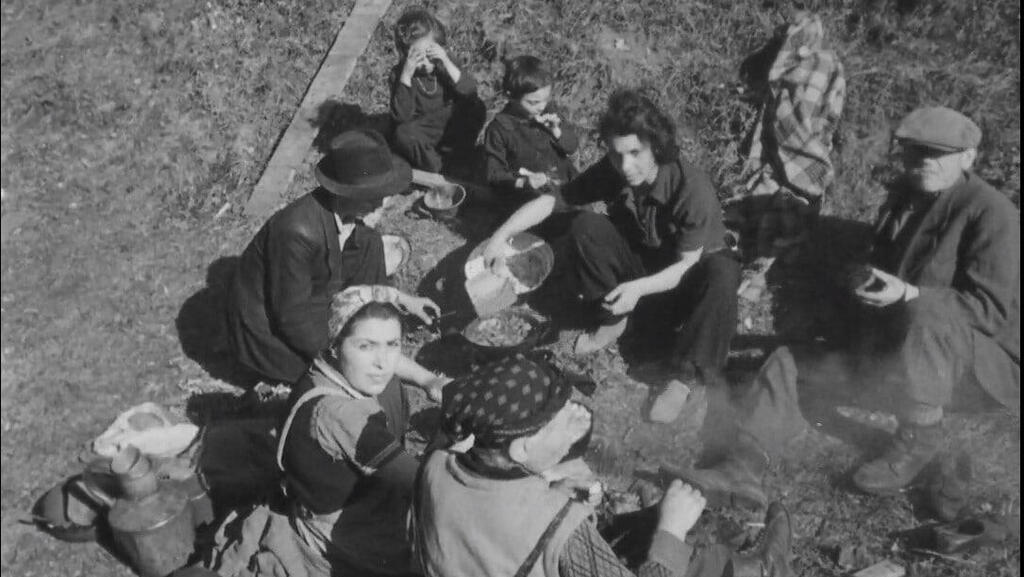

Gita Be'eri (wearing headscarf, looking at camera) and other Jews liberated from the Nazi death train
(Photo: Major Clarence Benjamin)
In the video, American soldiers are seen distributing chocolate and cigarettes to prisoners. Some of the prisoners are still on the train and do not disembark from it. Others got off the train and immediately lay on the ground and went to sleep as they were completely exhausted. Some of them seem resigned. Many are waving toward the American cameraman. On one of the train cars, the prisoners wrote, "Long live the U..S and England. Three cheers for the U.S.".
In one segment, hundreds of Jewish prisoners are seen lying in a valley at the foot of the train, sunbathing. Others lit a fire to warm themselves or make tea.
The second part of the video documents a meeting of American, Russian, and English soldiers after the liberation of the city of Magdeburg on the Elbe riverbank. In one segment, soldiers are seen lying on the Elbe riverbank and one of them is playing an accordion. In another part, smoke is seen from a distance - a remnant of a battle between the Allies and the Germans. In another segment, Russian, American and British generals meet to exchange battle experiences. In one of the photos, a tank is seen stopping, and Russian soldiers with submachine guns jump out of it.
First published: 05:45, 07.31.23





